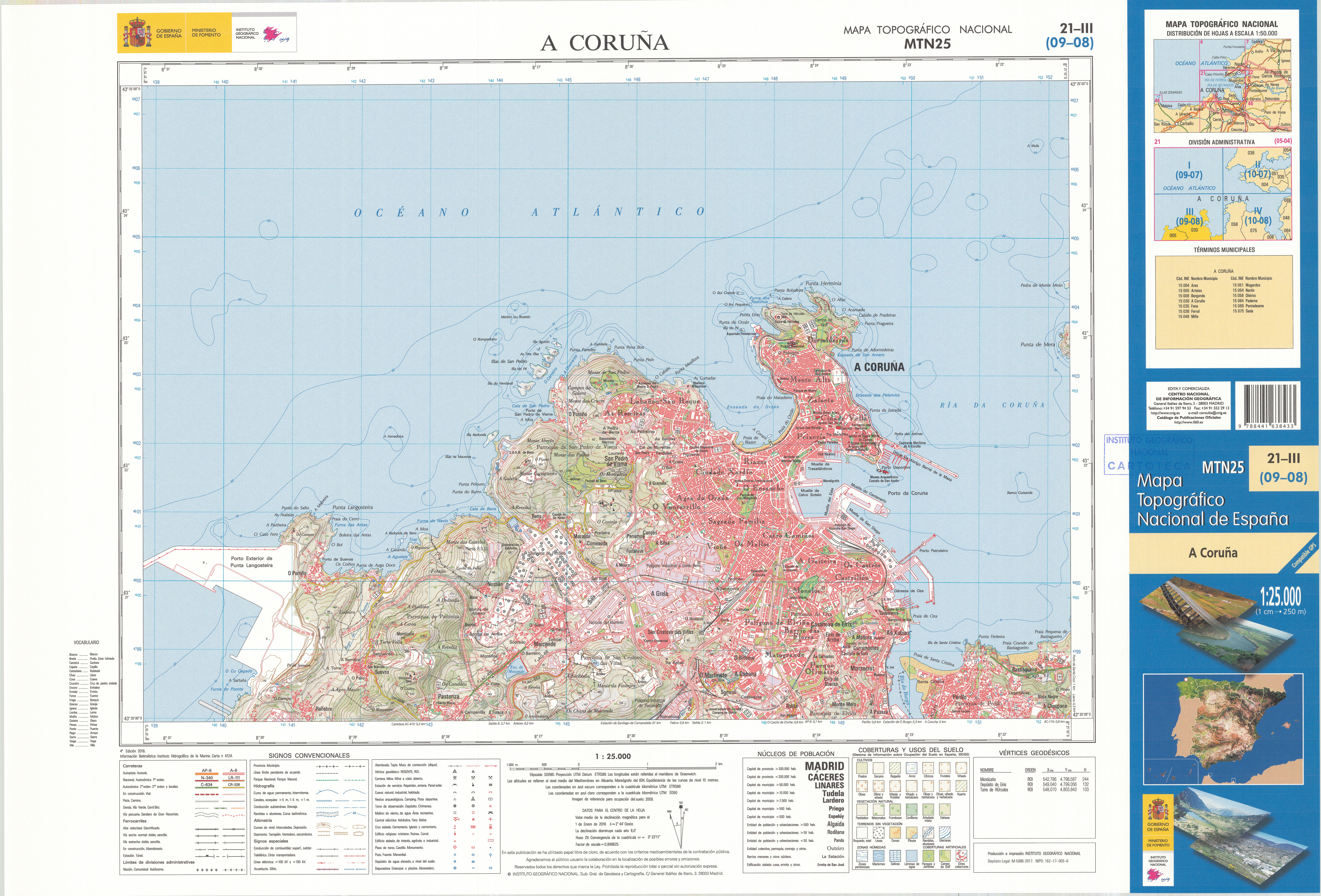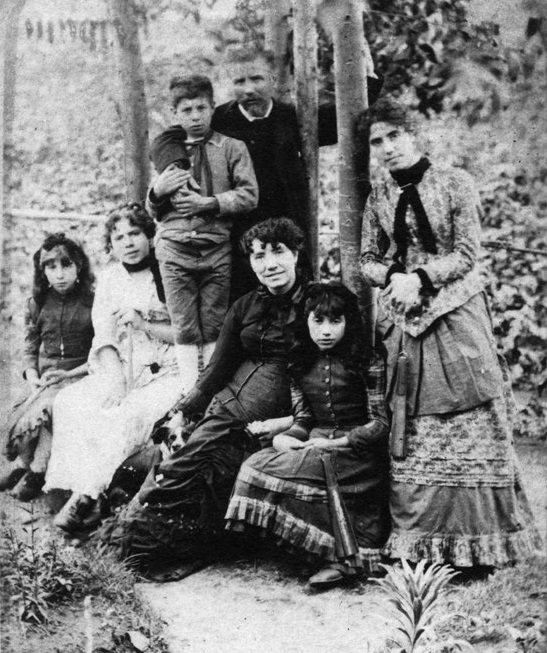|
Clara Corral Aller
Clara Corral Aller (Ourense, 8 June 1847 - A Coruña, 9 February 1908) was a Galician poet, the second woman to publish a text in Galician language during the 19th century, after Rosalía de Castro. Daughter of Dimas Corral Rebellón and Clara Aller Presas, in 1852 she moved with her family to Lugo Lugo (, ; la, Lucus Augusti) is a city in northwestern Spain in the autonomous communities of Spain, autonomous community of Galicia (Spain), Galicia. It is the capital of the Lugo (province), province of Lugo. The municipality had a population .... Orphaned by her father and mother, she moved with her sisters Consuelo and Rita to Santiago de Compostela in 1868 and devoted herself to her literary work. Their poems appeared in the press of the time, ''El Diario de Santiago'', ''Revista Compostelana de Instrucción y Recreo'' and ''La Ilustración Gallega y Asturiana''. In 1884 she moved to A Coruña with her brother and sister-in-law. In 1891, she published “''A Herminia''”, ... [...More Info...] [...Related Items...] OR: [Wikipedia] [Google] [Baidu] |
Ourense
Ourense (; es, Orense ) is a city and capital of the province of Ourense, located in the Autonomous communities of Spain, autonomous community of Galicia (Spain), Galicia, northwestern Spain. It is on the Camino Sanabrés path of the Way of St James (Camino de Santiago), and is crossed by the Minho (river), Miño, Barbaña, Loña and Barbañica rivers. It is also known as ''A cidade das Burgas'' (in Galician) due to its hot springs, being one of the European cities with the greatest thermal heritage. Population Its population of 105,233 (2019) accounts for 34.2% of the population of the province and makes it the third largest city of Galicia. Its metropolitan area has a population that exceeds 140,000. In 2019 there were 14,171 foreigners living in the city, representing 13.5% of the total population. The main nationalities are Portuguese people, Portuguese (31.8%), Venezuelans (11.2%) and Romanians (7.9%). By language, according to 2018 data, 32.3% of the population always ... [...More Info...] [...Related Items...] OR: [Wikipedia] [Google] [Baidu] |
A Coruña
A Coruña (; es, La Coruña ; historical English: Corunna or The Groyne) is a city and municipality of Galicia, Spain. A Coruña is the most populated city in Galicia and the second most populated municipality in the autonomous community and seventeenth overall in the country. The city is the provincial capital of the province of the same name, having also served as political capital of the Kingdom of Galicia from the 16th to the 19th centuries, and as a regional administrative centre between 1833 and 1982, before being replaced by Santiago de Compostela. A Coruña is located on a promontory in the Golfo Ártabro, a large gulf on the Atlantic Ocean. It is the main industrial and financial centre of northern Galicia, and holds the headquarters of the Universidade da Coruña. A Coruña is a packed city, the Spanish city featuring the tallest mean-height of buildings, also featuring a population density of 21,972 inhabitants per square km of built land area. Name Origin Ther ... [...More Info...] [...Related Items...] OR: [Wikipedia] [Google] [Baidu] |
Spanish Language
Spanish ( or , Castilian) is a Romance languages, Romance language of the Indo-European language family that evolved from colloquial Latin spoken on the Iberian peninsula. Today, it is a world language, global language with more than 500 million native speakers, mainly in the Americas and Spain. Spanish is the official language of List of countries where Spanish is an official language, 20 countries. It is the world's list of languages by number of native speakers, second-most spoken native language after Mandarin Chinese; the world's list of languages by total number of speakers, fourth-most spoken language overall after English language, English, Mandarin Chinese, and Hindustani language, Hindustani (Hindi-Urdu); and the world's most widely spoken Romance languages, Romance language. The largest population of native speakers is in Mexico. Spanish is part of the Iberian Romance languages, Ibero-Romance group of languages, which evolved from several dialects of Vulgar Latin in I ... [...More Info...] [...Related Items...] OR: [Wikipedia] [Google] [Baidu] |
Spain
, image_flag = Bandera de España.svg , image_coat = Escudo de España (mazonado).svg , national_motto = ''Plus ultra'' (Latin)(English: "Further Beyond") , national_anthem = (English: "Royal March") , image_map = , map_caption = , image_map2 = , capital = Madrid , coordinates = , largest_city = Madrid , languages_type = Official language , languages = Spanish language, Spanish , ethnic_groups = , ethnic_groups_year = , ethnic_groups_ref = , religion = , religion_ref = , religion_year = 2020 , demonym = , government_type = Unitary state, Unitary Parliamentary system, parliamentary constitutional monarchy , leader_title1 = Monarchy of Spain, Monarch , leader_name1 = Felipe VI , leader_title2 = Prime Minister of Spain ... [...More Info...] [...Related Items...] OR: [Wikipedia] [Google] [Baidu] |
Rosalía De Castro
María Rosalía Rita de Castro (; 23 February 1837 – 15 July 1885), was a Galician poet and novelist, considered one of the most important figures of the 19th-century Spanish literature and modern lyricism. Widely regarded as the greatest Galician cultural icon, she was a leading figure in the emergence of the literary Galician language. Through her work, she projected multiple emotions, including the yearning for the celebration of Galician identity and culture, and female empowerment. She is credited for challenging the traditional female writer archetype. Life Writing in Galician and Spanish, after the period known as the ''Séculos Escuros'' (lit. Dark Centuries), she became an important figure of the Galician Romantic movement, known today as the ''Rexurdimento'' ("Renaissance"), along with Manuel Curros Enríquez and Eduardo Pondal. Her poetry is marked by ''saudade'', an almost ineffable combination of nostalgia, longing and melancholy. She married Manuel Murguía, a ... [...More Info...] [...Related Items...] OR: [Wikipedia] [Google] [Baidu] |
Lugo
Lugo (, ; la, Lucus Augusti) is a city in northwestern Spain in the autonomous communities of Spain, autonomous community of Galicia (Spain), Galicia. It is the capital of the Lugo (province), province of Lugo. The municipality had a population of 98,025 in 2018, making it the fourth most populous city in Galicia (Spain), Galicia. Lugo is the only city in the world to be surrounded by completely intact Roman Walls of Lugo, Roman walls, which reach a height of along a circuit ringed with 71 towers. The walk along the top is continuous round the circuit, and features ten gates. These 3rd century walls are protected by UNESCO as a World Heritage Site. The Roman bridge of Lugo, city's historic bridge over the Miño River, Miño is essentially of Roman date, though many repairs over the centuries have effaced its Roman character. It is along the Camino Primitivo path of the Camino de Santiago. Population The population of the city in 2018 was 98,026 inhabitants, which has been gro ... [...More Info...] [...Related Items...] OR: [Wikipedia] [Google] [Baidu] |
Galician Poets
Galician may refer to: * Something of, from, or related to Galicia (Spain) ** Galician language ** Galician people ** Gallaeci, a large Celtic tribal federation who inhabited Gallaecia (currently Galicia (Spain) * Something of, from, or related to Galicia (Eastern Europe) * SS ''Galician'' a liner later renamed the HMHS ''Glenart Castle'' See also * Galicia (other) * Halychian (other) Halychian may refer to: * something or someone related to the city of Halych, in modern Ukraine * Halychian Principality, an East Slavic medieval state, centered in Halych * Halychian-Volhynian Principality, an East Slavic medieval state, unitin ... {{Disambiguation Language and nationality disambiguation pages ... [...More Info...] [...Related Items...] OR: [Wikipedia] [Google] [Baidu] |
Spanish Women Writers
This is a list of women writers who were born in Spain or whose writings are closely associated with that country. A * Mercedes Abad (born 1961), journalist, short story writer * Rosario de Acuña (1850–1923), playwright, essayist, short story writer and poet * Anna Aguilar-Amat (born 1962), Catalan-language poet, translator * Francisca Aguirre (1930–2019), poet *Aisha (died 1010), acclaimed Arabic-language poet *Caterina Albert (1869–1966), short story writer, novelist and poet * Núria Albó (born 1930), novelist, politician *Aurora de Albornoz (1926–1990), poet *Josefina Aldecoa (1926–2011), novelist *Aurora de Albornoz (born 1947), Galician-language poet, translator, biologist * Concepción Aleixandre (1862–1952), gynaecologist, feminist, non-fiction writer * Marilar Aleixandre (born 1947), writer, translator and biologist * Jesusa Alfau Galván de Solalinde (1895–1943), novelist * Florina Alías (1921–1999), Asturian-language author * Maria Dolors Alibés (194 ... [...More Info...] [...Related Items...] OR: [Wikipedia] [Google] [Baidu] |
19th-century Spanish Writers
The 19th (nineteenth) century began on 1 January 1801 ( MDCCCI), and ended on 31 December 1900 ( MCM). The 19th century was the ninth century of the 2nd millennium. The 19th century was characterized by vast social upheaval. Slavery was abolished in much of Europe and the Americas. The First Industrial Revolution, though it began in the late 18th century, expanding beyond its British homeland for the first time during this century, particularly remaking the economies and societies of the Low Countries, the Rhineland, Northern Italy, and the Northeastern United States. A few decades later, the Second Industrial Revolution led to ever more massive urbanization and much higher levels of productivity, profit, and prosperity, a pattern that continued into the 20th century. The Islamic gunpowder empires fell into decline and European imperialism brought much of South Asia, Southeast Asia, and almost all of Africa under colonial rule. It was also marked by the collapse of the large S ... [...More Info...] [...Related Items...] OR: [Wikipedia] [Google] [Baidu] |
19th-century Spanish Women Writers
The 19th (nineteenth) century began on 1 January 1801 ( MDCCCI), and ended on 31 December 1900 ( MCM). The 19th century was the ninth century of the 2nd millennium. The 19th century was characterized by vast social upheaval. Slavery was abolished in much of Europe and the Americas. The First Industrial Revolution, though it began in the late 18th century, expanding beyond its British homeland for the first time during this century, particularly remaking the economies and societies of the Low Countries, the Rhineland, Northern Italy, and the Northeastern United States. A few decades later, the Second Industrial Revolution led to ever more massive urbanization and much higher levels of productivity, profit, and prosperity, a pattern that continued into the 20th century. The Islamic gunpowder empires fell into decline and European imperialism brought much of South Asia, Southeast Asia, and almost all of Africa under colonial rule. It was also marked by the collapse of the large ... [...More Info...] [...Related Items...] OR: [Wikipedia] [Google] [Baidu] |





